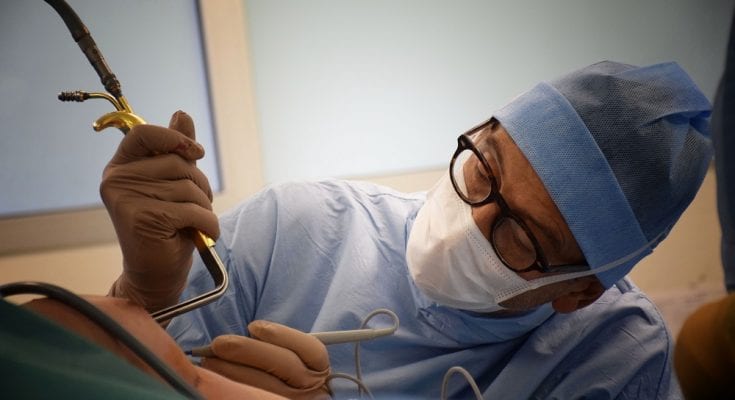Breasts can be enlarged with either an implant or your own fat transfer. Breast deposition caused by breastfeeding can also be corrected with an implant. Commonly referred as “boob job”, it can be quite liberating for women with self esteem issues due to their appearance. But before you get a breast augments, following is are the things that you need to know.
Who is it recommended for?
Breast augmentation surgery is always planned individually with the plastic surgeon, taking into account the client’s wishes, individual needs and different options. In breast augmentation using an implant, congenital breast asymmetry or congenital small breasts can be corrected. In such a situation, puberty is expected to be over and breast development has stopped, usually after 18 years of age. Surgery can also be used to treat breast emptying or loss of breast posture caused by pregnancy and breastfeeding. Sometimes, in addition to the implant, obtaining an upright breast also requires breast augmentation surgery, or mastopexy, at the same time. When a small increase in cup size is desired, this can be accomplished by transferring your own fat.
Measure planning
Breast augmentation begins with a consultation with the plastic surgeon, where the right size and shape of the implant is selected to ensure the best outcome, taking into account the needs and wishes of the client. The plastic surgeon also plans the placement of the implant, the surgical scars and goes through the measures to prevent the scar capsule from forming. During the consultation visit, the surgeon will refer to breast mammography and ultrasound examinations to examine the structure of the breast and ensure that the breasts are healthy.
Procedure
Breast augmentation surgery is always performed under anesthesia. Breast augmentation surgery is a day surgery and takes about an hour. After this, you will be followed by our professional wake-up nurse for a few hours, after which you will get home.
The support bras used after breast augmentations are already worn in the operating room. The vests are worn around the clock for three weeks or as prescribed by the plastic surgeon who cut them. After that, for the next three weeks, always during the day.
After the procedure
You can get home on the same day as the applicant. After breast augmentation surgery, pain may occur, especially when using the pectoral muscles. For this reason, driving a car cannot be recommended immediately after the procedure. Postoperative pain is well treated with painkillers prescribed by a doctor.
Recovery
After breast augmentation surgery, the need for sick leave is 1-2 weeks, depending on the job.
Physical exertion and sports are prohibited for two weeks after breast augmentation surgery. Jumping and bouncing sports as well as chest muscle training should be watched for 6-8 weeks.
Thorough adherence to aftercare instructions after breast augmentation surgery minimizes the risk of complications such as breast implant capsule formation.
Follow – up and monitoring
Follow-up is one week after breast augmentation surgery at the surgery of the plastic surgeon who underwent surgery. The stitches melt by themselves; they do not need to be removed. Follow-up after six months is included in the price of the measure.
The implants we use are of high quality and thoroughly researched and have not been found to cause allergies or cancer. Over time, however, changes in the implant or body are possible that require a review of the situation or replacement of the implant.
Every woman over the age of 40 should have a breast mammography examination every two years. In this context, the implants and their structure are examined by ultrasound. A mammography examination can be performed normally. In order to describe the breast tissue hidden behind the implant, an additional side view of the implanted breasts is always taken.
Result
Swelling and bruising may occur in the breasts for 2-3 weeks. Breasts are similar to normal breasts or slightly firmer after normal surgery. The final shape of the breasts can be seen after 3-6 months. Breast augmentation surgery has no effect on breastfeeding ability.
Scars: In breast augmentation surgery, the scars are located either in the armpit, in the fold of the breast, or around the nipple. However, the most common route to inserting a breast implant is the pectoral fold. After surgery, the scars may turn red for several months. Sometimes locally occurring increased scarring can be treated locally. The solidification of the connective tissue surrounding the implant occurs by a few percent. Only about 2-3 percent of all surgeries need capsule contracture repair surgery.
Scar capsule or capsule contour: The body forms a scar film around the implant, which sometimes causes the implant to solidify, or so-called capsule formation. A detrimental scar capsule can be repaired with a small incision. However, with modern surgical procedures, objective operating room conditions, a skilled plastic surgeon, and new types of implants, the capsule problem is quite rare.
Possible side effects: Breast augmentation surgery may be associated with bleeding or inflammation as a complication. Any transient local lack of skin sensation around the surgical horn is normal and the sensation is fully restored. Before surgery, the surgical plastic surgeon goes through the risks associated with the surgery with the patient. The patient is best able to minimize the risks by following the doctor’s instructions carefully before and after surgery.



